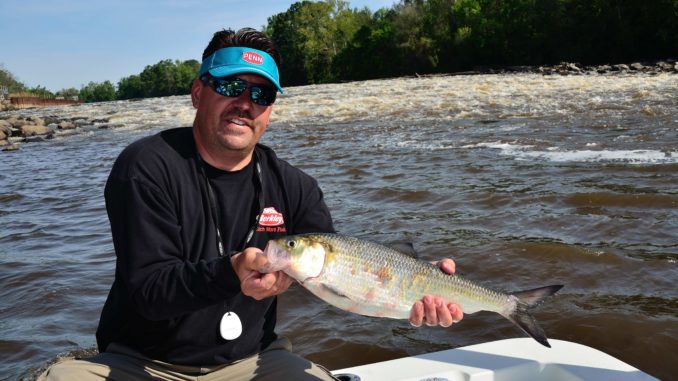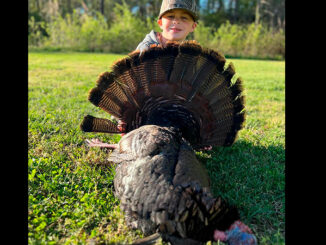
February, March are prime time for spring spawning run of these feisty fish
It’s been cold, and many anglers have been waiting for the slightest break in weather. And while many are looking forward to next month, plenty of others know that February is really the time to break out the ultralight gear and head to a handful of rivers across the Carolinas for the shad run.
Whether it’s American or Hickory shad on North Carolina’s Tar or Cape Fear rivers and the several streams and creeks near them, or South Carolina’s American shad on the Cooper or Santee rivers, you’ll find plenty of strong fish to cure your winter fishing blues.
Shad are anadromous, meaning they’re born in freshwater, live in saltwater and return to freshwater to spawn, so they aren’t present throughout the year but are thick as molasses when this part of the calendar rolls around.
These fish do more than just cure the winter blues. They are also good to eat, and while many anglers keep their share of fish, it’s mostly the thrill they’re after, and these fish provide it.
Shad can range from a half-pound up to 4 pounds, with a few even larger being caught each year. While they may average on the small side for folks who are used to redfish, seatrout, mackerel or mahi-mahi, using ultralight tackle makes them feel like monsters. It makes this type of fishing challenging — as well as a blast.
Four- to 6-pound test line is common, usually spooled on 1000 series or smaller reels. Basically, if it’s an outfit on which you enjoy catching bream or mountain trout, it’s good for shad fishing. Making a long cast upcurrent, allowing the lure to sink, then using a steady retrieve is all it takes, and anglers can vary their retrieve when the bite is tough or slows down.
The most-common lures include soft-plastic grubs on 1/16- to 1/8-ounce leadhead jigs; small spoons also work very well. After launching your boat on any of the landings leading to these creeks and rivers, you’ll find the shad fishing gets better the closer you get to dams, locks and railroad trestles. Most anglers prefer a fair amount of current, and depending on which waterway you’re in, the best current could be on either side of the waterway. That could also depend on which gates are open on the dam upstream from your fishing spot.
One of the best things about hitting these waters early this month is it will be less crowded. Even though a diehard collection of anglers pursue these fish each year, many folks wait until they hear through the grapevine that the shad are biting. But the earlier — and more often — you go, the better chance you have of timing it just right, and being at the top of the grapevine.
Numbers first, bigger fish as the month progresses
Sammy Black of Longs, S.C., fishes for shad in both Carolinas. He gets started in late January, and he said big numbers follow, and then big fish.
“I’ve caught fish as early as the last week of January, and while most of the bigger fish are usually caught in late February, it’s always worth going throughout the month,” he said. “Once they start biting, you can have 100-plus fish days. The majority of shad will be well worth keeping, and you’ll happen across a real big one here and there.
“I like to find a spot where there is clearly a stronger presence of current than the surrounding areas, and I want that spot to be within casting distance of some type of structure like a railroad crossing, downed trees, rock walls — just something other than what makes up the majority of the banks and the floor of the river. But honestly, once you get close enough to whichever dam you’re fishing below, the shad will be all around,” he said.
Black said later in the month, the rivers will be chock full of boats, but he said it’s never a problem.
“Everybody gets along real good on all these rivers,” he said. “You’ll have boats tying up to other boats that were complete strangers just minutes earlier, and doing that or anchoring down in a straight line is best. You don’t want to anchor down 10 feet to the side of another boat, which will hurt their casting and yours. These fish come through in schools, so you don’t have to be the lead boat. Usually, when one angler hooks up, a whole slew of them do.”
How many?
North Carolina allows anglers to keep 10 fish per day. On the Roanoke River and its tributaries and the Neuse River and its tributaries, one of those 10 fish can be American Shad. On the Cape Fear River and its tributaries, five can be American Shad. In South Carolina, anglers can take 10 shad per day, except in the Santee River, where the limit is 20 per day.





Be the first to comment